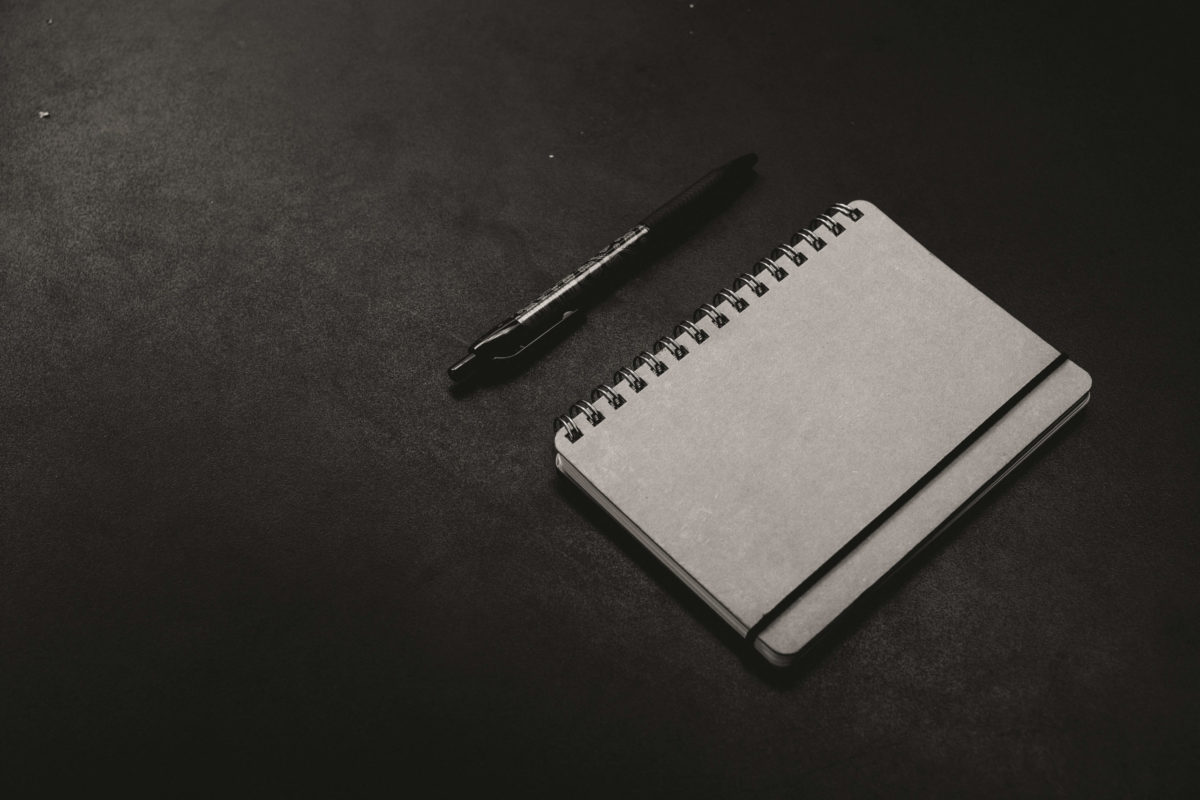How to Grow a Poet’s Notebook
In my 16 years of writing poetry and prose, one of the best writing tips I received was to keep a poet’s notebook and to write in it every day. While I heard that instruction in my first undergraduate creative writing class, you will find that same advice in MFA programs, in workshops, and in poetry craft books. It’s repeated everywhere because it’s great advice, and it’s the most important habit to develop in your poetry vocation.
Poet’s notebooks are an essential tool to own in your writing station. They are like hands and arms: You need to take them everywhere because you never know when inspiration will arrive. In her Ted Talk on creativity, Elizabeth Gilbert spoke about how poet Ruth Stone “would feel and hear a poem coming at her from over the landscape,” and she would have to run home and find a piece of paper and a pencil to capture it. That is the magic of creativity. It’s not rational; it’s playful.
While you can’t forget your hands and arms (also essential to your writing practice), you may sometimes forget to carry your poet’s notebook. That’s where napkins and scraps of paper come in handy, because once inspiration arrives, you will need plenty of writing space. Inspiration is like a flood: Once it appears, it will inundate you creatively, and you will need to have your notebook to capture all the lines and ideas that naturally flow toward you.
At this point in my writing career, I own hundreds of notebooks. There are so many that I’ve lost count, but I store them all, and my bedroom is beginning to look like an office supply room! In my writing experience, I’ve come to love keeping notebooks and finding great ones. Below I’ve compiled great insights and ideas for maintaining your poet’s notebook, so you can get the most out of it and capture all your creativity.
CHOOSE THE RIGHT NOTEBOOK
There are so many different sizes, styles, and types of writing notebooks that the options can become overwhelming. Narrow down your options by asking yourself questions about your taste and preferences: Do you like writing without lines or with lines? Do you prefer hardbound or softbound? You can also narrow your options by price. One of the cheapest options is a Mead composition notebook, but if you have fifteen bucks or more to spare, you can write on some of the best notebooks, such as Moleskine, Rhodia, or Leuchtturm1917.
Choose a notebook that you will treasure and enjoy carrying around. If you go for a walk, find a small notebook that will fit in your pocket or purse. If you go to school, you can carry a medium-size notebook that won’t be too heavy to take with you. The trick is to find something that is easily portable and a delight to carry.
FREEWRITE EVERYDAY
Sometimes life gets in the way, and there are important to-do lists waiting, but in spite of these distractions, it’s important to find time to write every day. It’s not always possible, but we must try to do this activity daily because it creates the space for creativity to flow. It also creates an important habit that improves your writing skills.
The best book on freewriting and creativity is The Artist’s Way. In the book, Julia Cameron discusses exercises known as “Morning Pages,” which emphasize stream-of-conscious writing that evokes the musings of the subconscious mind.
HIGHLIGHT YOUR BEST LINES WITH STICKY NOTES
If you freewrite every day, you’ll need to reread what you write on a weekly basis. While you’re reading your musings, look for poetic lines that strike you with lyrical or literary resonance. Look for lines that contain meter, rhythm, assonance, and dissonance.
Once you find these lyrical nuggets, underline them as you’re reading without stopping, so you don’t lose your flow. Later on, you can come back and highlight the best lines and then mark the pages with sticky notes, so you don’t forget them. We don’t always have time to work on our poetry when we feel inspired, so by marking these great lines, you will be able to move forward with your to-do lists and responsibilities for that day and then come back when you have the time and solitude to focus on your poetry.
DATE YOUR NOTEBOOKS
Dating your notebooks is essential because once you start growing a collection, it’s hard to keep track of when you started and finished the poems. On the front cover or somewhere inside the cover, mark the date you begin the notebook, as well as the date you finish it. This will help you keep track of how your poems evolve, which will be helpful for revision. When you type the poems on your computer, you can list the different versions of the poems, and that will make you proficient with your edits. You can list the evolutions of your poems with dates or with numbers. Either way, being organized is important because poetry and stories can evolve with time, and you may work on a poem today and not look at it for months. Dates help you remember where you left off and what you still have left to finish.
Maintaining a notebook brings many benefits to your writing career: It enables you to freewrite, to capture inspiration, and to reflect on your writing. For poets whose identities revolve around their writing and creativity, a notebook is truly an extension of their bodies. They are like the hands or mouths of lovers, and poets treasure them. Inside these paper containers are the timeless lines that spark the imagination of future generations of readers and poets.
If you’d like to read more about poets and their writing habits, check out this wonderful website that contains unique and insightful musings about well-known poets and their beloved notebooks.




